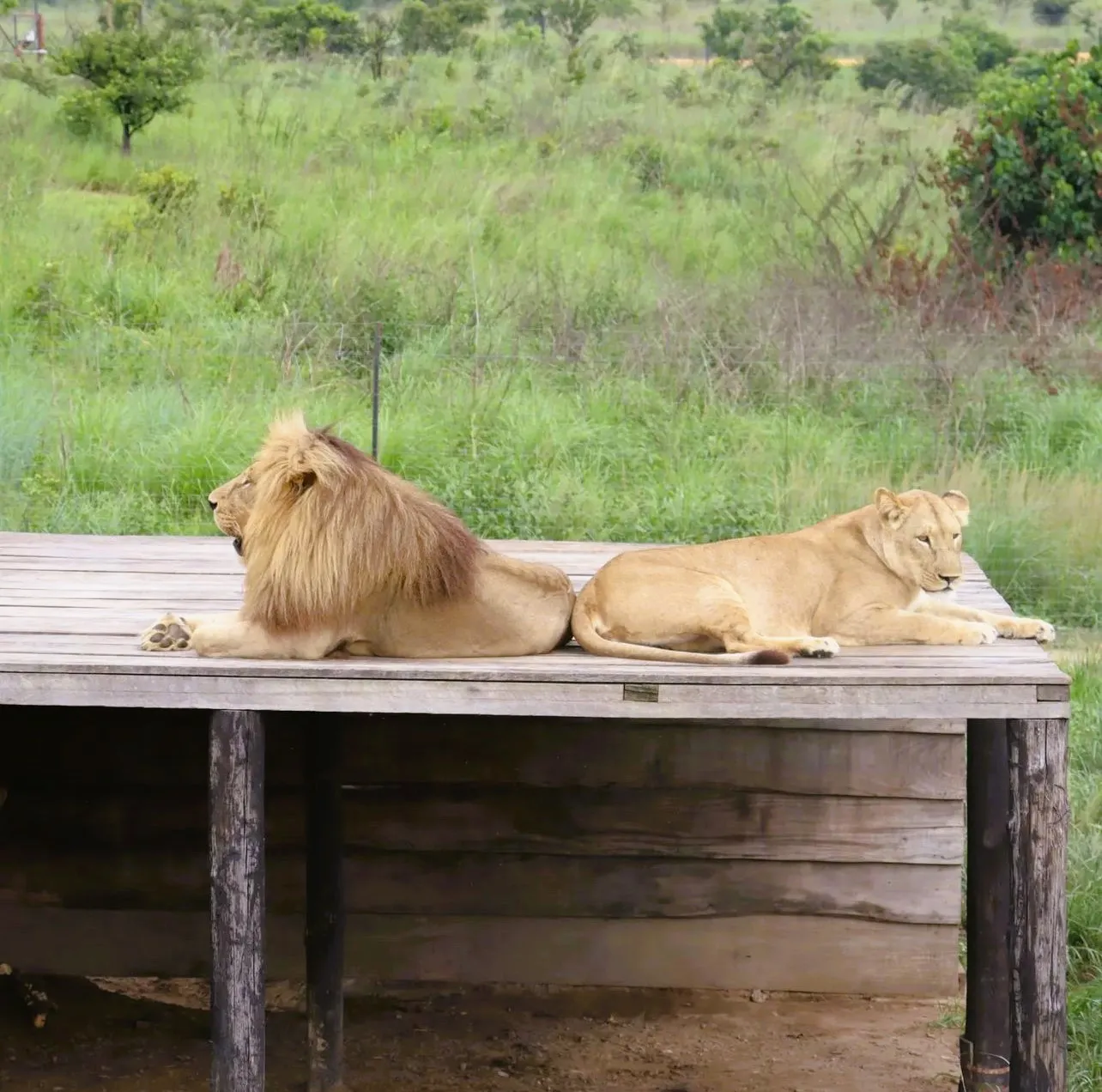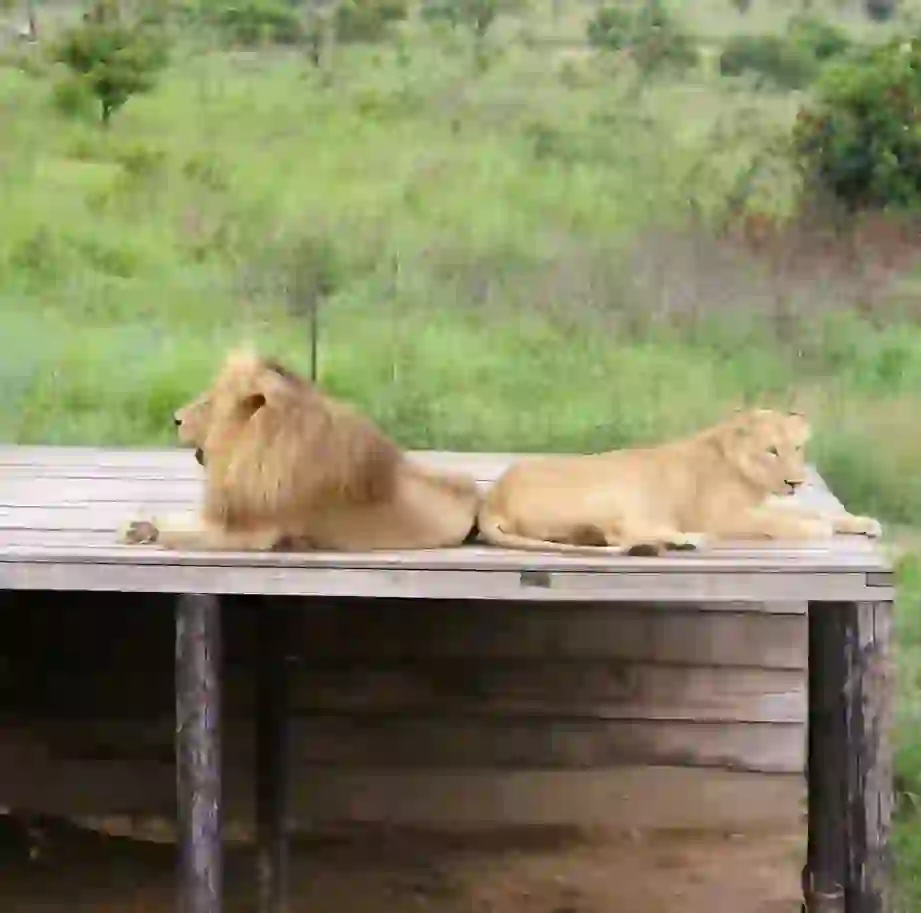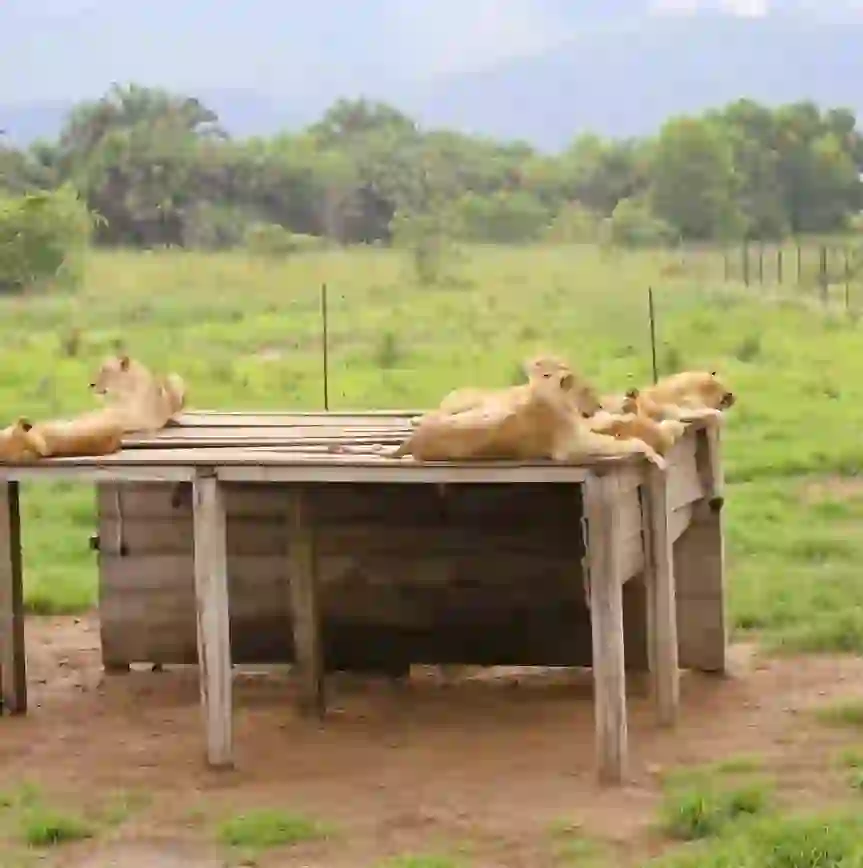
Congo Lion
Congo Lion
Congo Lion
The roar of the Congo lion once echoed through the dense forests of Central Africa. These enigmatic lions adapted to the unique environment of the rainforest. Let's explore the ecology of the Congo lion, the challenges they faced, and what the future holds for them.
Congo Lion Basic Infomation

| Property | Value |
|---|---|
| Scientific Name | Panthera leo azandica |
| Taxonomic Status | SUBSPECIES |
| Rank | Subspecies |
| Vernacular Names | Congo Lion |
| Kingdom | Animalia |
| Phylum | Chordata |
| Class | Mammalia |
| Order | Carnivora |
| Family | Felidae |
| Genus | Panthera |
| Habitats | Dense forests and rainforests of the Congo Basin in Central Africa |
| Descriptions | The Congo lion is a subspecies of lion that once lived in the Congo Basin of Central Africa. Adapted to dense forests and rainforests, they were smaller and had thinner manes than other lions. |
| Conservation Status | Endangered |

Size
They measured about 2.4 to 2.7 meters in length (including tail), and their weight is estimated to have been around 150 to 200 kilograms. They are slightly smaller than other lion subspecies.

Lifespan
It is believed that they lived for about 10 to 14 years in the wild.

Distribution
They were once widely distributed in the Congo Basin of Central Africa, including countries like the Democratic Republic of the Congo, the Central African Republic, Gabon, and Cameroon.
Congo Lion Q&A

What kind of lion was the Congo lion?
The Congo lion is a subspecies of lion that evolved and adapted to the dense forests and rainforests of the Congo Basin in Central Africa. They are smaller, have thinner manes, and shorter legs compared to other lion subspecies.
These characteristics are thought to be adaptations for moving through and hunting in dense forests. They are also said to have a quieter, shorter, and higher-pitched roar than other lions. This is thought to be an evolutionary adaptation to communicate effectively in dense forest environments where sound is easily obstructed.

What did Congo lions eat?
Congo lions were carnivores, mainly preying on deer, wild boar, antelope, and buffalo found in the Congo Basin. They sometimes hunted alone, but they often hunted cooperatively in small groups of two or three individuals.
They would stalk their prey and then attack in a sudden burst of speed. They used their sharp teeth and claws to kill their prey. They were also known to steal kills from other predators. They may have also occasionally preyed on livestock.

Why are Congo lions endangered?
Congo lions are currently listed as endangered. Their population has declined sharply due to human activities, primarily:
・Habitat loss: Deforestation and agricultural development are destroying their habitats.
・Poaching: Their bones and fur are highly valued in the illegal wildlife trade.
・Human-wildlife conflict: Lions that attack livestock or humans are sometimes killed.
Solving these problems is essential to protect Congo lions.

[Quiz!] Are Congo lions still alive today?
The Congo lion is currently listed as endangered, and their exact population is unknown. They are believed to be living in the remote depths of the Congo Basin.
However, there have been very few reports of Congo lion sightings in recent years. Therefore, it has been suggested that they may already be extinct. Their fate remains shrouded in mystery.

[Quiz!] Are there any conservation efforts for the Congo lion?
The Congo lion is listed as endangered, and international conservation organizations are working to protect them.
However, ongoing civil wars and conflicts in the Congo Basin make conservation efforts extremely difficult. Poaching and deforestation are also serious issues. To protect Congo lions, it is crucial to address these problems and conserve their habitat.

[Quiz!] How are Congo lions different from other lions?
Congo lions are smaller, have thinner manes, and shorter legs compared to other lion subspecies. This is thought to be an adaptation for moving through and hunting in dense forests.
They are also said to have a quieter, shorter, and higher-pitched roar than other lions. This is thought to be an evolutionary adaptation to communicate effectively in dense forest environments where sound is easily obstructed.

Would you like to become a part of the 'Animalbook.jp'?
Turn your knowledge into Q&A and share it with the world. ※Publication will be activated after purchase. Let's share information together!
Congo Lion Type of List

Characteristics of Congo Lions
- Smaller than other lions
- Thinner mane
- Shorter legs
- Quieter, shorter, and higher-pitched roar
- Adapted to the dense forests and rainforests of the Congo Basin in Central Africa
Information
Congratulations! You are the first commenter!

Create Your Favorite List!
Congo Lion
Save the animals you love! Build your own list to quickly revisit your favorites later.

Would you like to leave a comment?
※Please note: This is for the purchase of rights to post comments within the article.
Find Your Favorites!
Our shop offers a unique and attractive selection of goods themed around various animals.
Congo Lion References
Congo Lion Introduction of media used

EdwinAlden.1995, CC BY-SA 4.0, via Wikimedia Commons

EdwinAlden.1995, CC BY-SA 4.0, via Wikimedia Commons

Gomez Kalala, CC BY-SA 4.0, via Wikimedia Commons

Help Enrich Our Animalbook.jp with Your Media!
We are constantly looking to expand and enrich our Animalbook.jp with amazing photos and videos of animals. If you have any media that you'd like to share, please contribute and help us showcase the beauty and diversity of the animal kingdom. Your submissions will be credited and featured in our encyclopedia, reaching a wide audience of animal lovers.


















